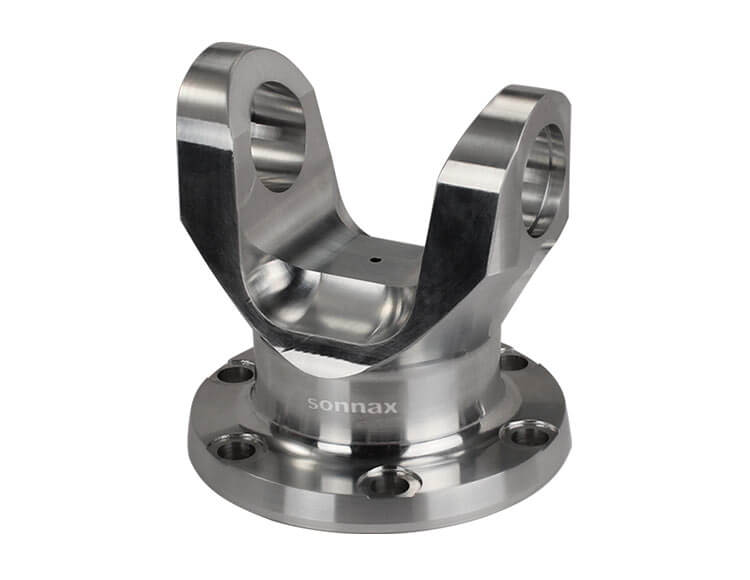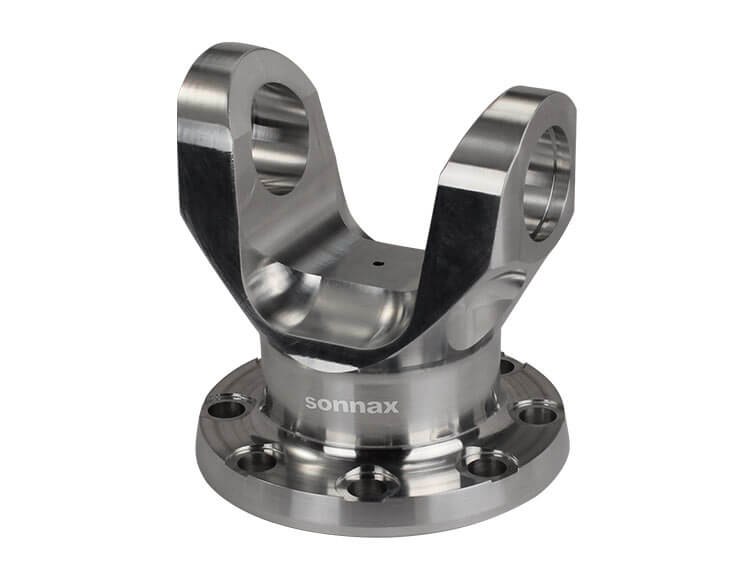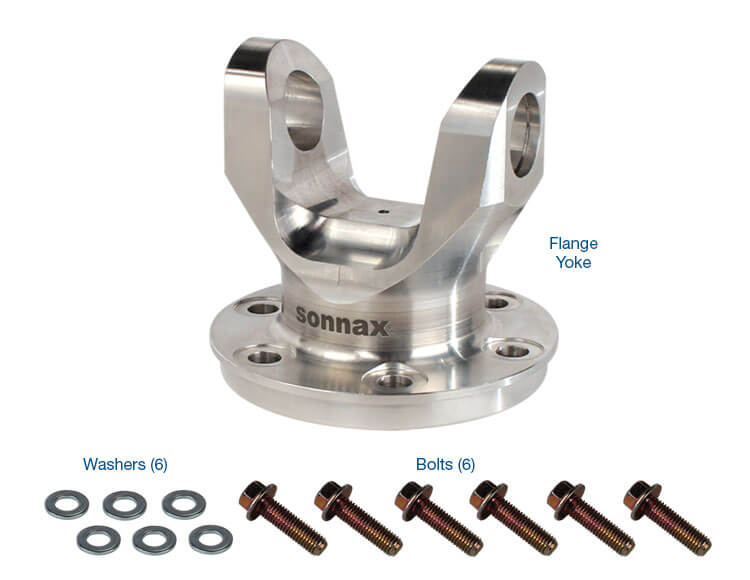July 09, 2015
The Evolution of Two-Piece Axles
Transferring the power from the engine to the ground is a long process that includes many different components. In the early days of the automobile, everything was focused on simplicity and cost, with noise and vibration coming in last. Technological advancements and the demand for ever-more efficient, comfortable vehicles caused the whole system to evolve over time. One component that changed over time is the part that transfers power from the transmission to the driveshaft.
The original method used by OEMs was a universal joint, or U-joint for short. This mechanism consisted of two opposing yokes with a spider in the center joining them together (Figure 1).
| Figure 1 – U-Joint Installed on a One-Piece Driveshaft |
|---|
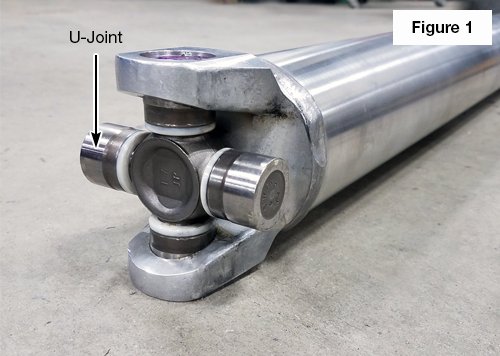 |
This allowed power to transfer from the transmission to a one-piece driveshaft and then to the rear end where there was another universal joint. This also allowed a considerable amount of angle difference between the output shaft of the transmission and the driveshaft to allow for suspension travel. This method seemed like it would stand the test of time until consumers started to become concerned with noises and vibrations in their vehicles. It was no longer acceptable to hear any clunks when the vehicle was put in Drive or feel the vibrations that the bearings of the spider would create at higher speeds. This is when the giubo joint gained popularity.
A giubo (sometimes misspelled as guibo) is the combination of the word "giunto," which is Italian for joint or coupling, and "Antonio Boschi," who was the engineer who patented the first flex disc. A giubo is a rubber block with cylindrical metal bolt hole reinforcements (Figure 2).
| Figure 2 – Giubo Joint Installed on Transmission |
|---|
 |
It was designed to connect the transmission to the driveshaft of rear-wheel and all-wheel drive vehicles and minimize vibrations. Because it is made of rubber, it can flex slightly as the driveline becomes misaligned due to suspension travel. Giubo joints have been extensively used in German vehicles such as BMW and Mercedes for a long time but have found their way into American vehicles as well.
The giubo joint provides a quieter and smoother operation than the universal joint. The unfortunate reality, however, is the typical driveshaft setup used by manufacturers still needs to contain universal joints in the center and rear of the now two-piece driveshaft to maintain the correct angles throughout the suspension travel. Manufacturers have also added a center support with a slipshaft that incorporates a carrier bearing to minimize vibrations of the driveshaft. The driveline system, when brand new, operates with much less noise and vibration than ever before.
This system is not without faults however, and everything mechanical will eventually fail one way or another. Eventually the rubber giubo will break down and begin vibrating at higher speeds and will need to be replaced before it shears completely. Vehicles with added horsepower will exacerbate the problem and cause the joint to fail even sooner. The carrier bearing will also eventually wear out, causing a vibration and noise. What’s worse is that most of the carrier bearing assemblies do not incorporate a grease fitting to prolong the life of the bearing. Also, the bearing cannot usually be replaced by itself; the entire driveshaft must be replaced as a unit.
Some high performance enthusiasts have opted to eliminate the giubo joint altogether by replacing it with one of our high-strength aluminum adapter flanges that accepts a standard U-joint (Figure 3).
| Figure 3 – Adapter Flange Yoke Installed on One-Piece Driveshaft |
|---|
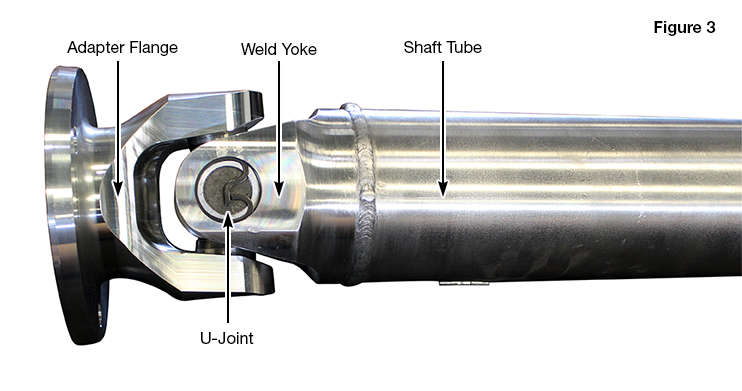 |
| Photo Courtesy of Driveshaft Specialists of Tampa |
Sonnax offers an adapter flange for many modern applications. Fitment is extremely important and requires key measurements be taken. Click here to see adapter flange options and how to measure the original components. Vehicle owners can then have a driveshaft company fabricate a one-piece driveshaft with a built-in slip joint in place of the two-piece system for higher horsepower applications. Depending on the particular setup, this may be mated to another adapter flange at the rear of the driveshaft to replace the rear pinion yoke. This creates a stronger driveshaft setup with fewer weak points.
When and how to adapt a driveshaft like this should be left to specialists, but it’s good for transmission builders to know the option exists. They can then work with a driveshaft shop to help customers get exactly what they need. Driveshaft shops also are the place to send vehicle owners looking for information about which driveline parts are best for their vehicle or where to buy Sonnax driveshaft components.
Jason Larochelle is a Sonnax product support representative. He is a member of the Sonnax TASC Force (Technical Automotive Specialties Committee), a group of recognized industry technical specialists, transmission rebuilders and Sonnax technicians.
Learn More
July 20, 2016
Give Them the Slip — Avoid Comebacks with Sonnax Slip Yokes
November 17, 2015
Lay It on the Line – Guard Against Comebacks with Easy Driveline Inspection Techniques
Devin Gallagher
July 27, 2016
Sonnax Driveline Performance Build Examples
February 08, 2017
Driveshaft Winter Weather Checklist & Upgrades
May 26, 2017
Summer Driveshaft Checklist & Upgrades
February 21, 2020
How to Choose the Right Slip Yoke
Related Parts
While Sonnax makes every effort to ensure the accuracy of technical articles at time of publication, we assume no liability for inaccuracies or for information which may become outdated or obsolete over time.

